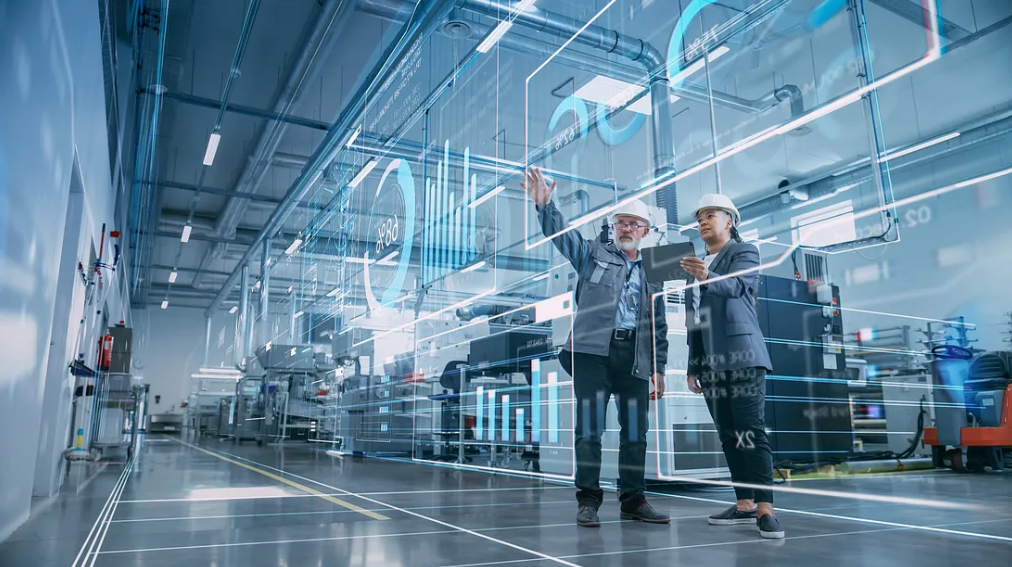Computer vision is considered one of the most rapidly growing fields in the tech world. According to Grand View Research, the computer vision market size was valued at $11.32 billion in 2020 and is expected to expand at an annual growth rate of 7.3% from 2021 to 2028. Computer vision has varied applications across different sectors making work more effective, safe, and efficient. It is more crucial than ever for companies to understand computer vision and its many benefits in a modern workplace.
Modern Definition
In order to understand computer vision we also need to understand the function of artificial intelligence. Computer vision, as defined by Intel, is technology which ‘’uses artificial intelligence to see and interpret visual data and can be deployed in cameras, edge servers or the cloud.’’ Artificial intelligence (AI), on contrary to what we see in our sci-fi movies being the key ingredient to create the ‘’villain-of-the-future’’ narrative, is a machine’s ability to mimic human intelligence and make data-driven decisions to improve performance. Before we deep dive into why we need computer vision for a sustainable future, let’s take a look at the history of computer vision and why it has taken this long for companies to reap its benefits.
History of Computer Vision
Ideas around using automation to improve human’s lives were first recorded about 3000 years ago in ancient Greece. Texts recovered from that period have mentioned using automation to create mechanical serving maids and soldiers for armies to defend cities from incoming invaders. These were far-fetched ideas at the time but have slowly developed into reality.
During the 1960s, various projects were proposed by academic scientists to bring computer vision to life but were met with financial constraints and business challenges due to the lack of technology advancements and clear understanding of the concept. Finally, with the boom of internet and the cost of computer hardware going down, the topic came to life again in 2012 when a team from the University of Canada made huge strides in deep learning — a subset of machine learning which uses artificial neural networks. The team was the first to demonstrate more than 75% accuracy at the 2012 Large Scale Visual Recognition Challenge.
Modern World Use Cases
If we begin to identify AI use cases around us, we can come up with several applications that help us in our daily life — from hearing aids to language translations to object recognition — and the list goes on. If we focus on the computer vision aspect, we see cameras everywhere around us in smart cities, manufacturing plants, hospitals etcetc. continuously capturing images. If we can provide the ability for the camera to understand these images and can make decisions based on what it sees, we can make a revolutionary leap and solve endless problems.
It has been estimated that on average a person comes in camera sight 70 times a day, this shows the extent to how much we rely on cameras in our daily life. The use of camera continues to increase as advancements in technology have enabled tasks performed by the camera to be much more accurate and cost effective as compared to the traditional ways. This raises a very pertinent question: are companies keeping up with this computer vision evolution to sustain their existence in the future?
Stepping into the Future
Today computer vision is the backbone of various industries like healthcare, retail, manufacturing and many more. Auto manufactures are continuously striving to move towards autonomous driving. Renowned car maker Tesla has already announced its transition to Tesla vision, a camera based auto pilot system. In healthcare companies are using computer vision to diagnose various diseases. In retail, computer vision is being extensively used to get insights on costumer behavior and demographics to continuously improve customer experience. All this has been made possible because of the advancements in technology both on the hardware side and on the applications of AI. Companies are investing in R&D to develop computer vision applications to improve their business efficiency. Key players include Intel and other semi-conductor manufacturers who are working hard to innovate and keep up with the computing requirements of the present day, allowing companies of all sizes to reap the benefits from the world of computer vision.
To learn more about the benefits of computer vision and how it can be used to accelerate your business, reach out to TD SYNNEX IoT team.
Article submitted by Sohaib Malik, IoT & Analytics Solutions Architect at TD SYNNEX
